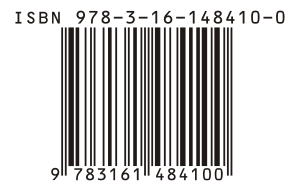International Standard Book Number facts for kids
The International Standard Book Number, or ISBN, is a special code that helps identify books. Think of it like a unique fingerprint for every book! It's a number that helps stores, libraries, and readers find the exact book they are looking for.
The ISBN system was first created in the United Kingdom in 1966 by a company called W.H. Smith. At first, it was a 9-digit code called the Standard Book Numbering (SBN). Later, in 1970, it became an international standard. Since January 1, 2007, ISBNs have 13 digits. This makes them similar to the barcodes you see on many products, called EAN-13 codes. A similar code, the International Standard Serial Number (ISSN), is used for magazines and other regular publications.
Contents
What is an ISBN?
An ISBN is given to each different edition of a book. For example, a hardcover version and a paperback version of the same book will have different ISBNs. If an ISBN was given out before January 1, 2007, it has 10 digits. If it was given out after that date, it has 13 digits.
An International Standard Book Number is made up of 4 or 5 parts:
- For a 13-digit ISBN, it starts with a GS1 prefix: either 978 or 979.
- The group identifier code: This shows the country or language group.
- The publisher code: This identifies the specific company that published the book.
- The item number: This is unique to that particular book title and edition.
- A checksum character: This is a special digit used to check if the ISBN is correct.
These parts can be different lengths. They are usually separated by hyphens or spaces to make them easier to read.
Group Identifier Codes
The group identifier code helps show where the book comes from. For example:
- 0 or 1 is for English-speaking countries.
- 2 is for French-speaking countries.
- 3 is for German-speaking countries.
- 4 is for Japanese.
- 5 is for Russian.
This code can be up to 5 digits long. For example, 99936 is a group identifier for the country Bhutan.
Publisher and Item Numbers
A special agency in each country gives out the publisher numbers. The publisher then chooses the item number for each book they release. Most bookstores only sell books that have an ISBN. This makes it much easier for them to keep track of their inventory.
Other Important Codes
Just like books have ISBNs, other types of media and products have their own unique codes. Here are a few examples:
- Amazon Standard Identification Number (ASIN): Used by Amazon for products.
- Digital Object Identifier (DOI): Used for online articles and documents.
- European Article Number (EAN): A general barcode for many products.
- International Standard Music Number (ISMN): For printed music.
- International Standard Serial Number (ISSN): For magazines and journals.
- Library of Congress Control Number: Used by libraries in the United States.
- PMID (PubMed ID): For articles in the PubMed database.
See also
 In Spanish: ISBN para niños
In Spanish: ISBN para niños


